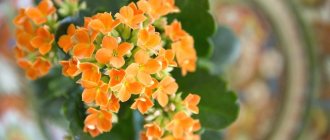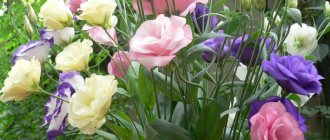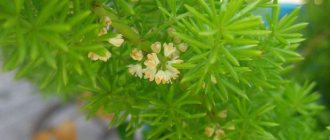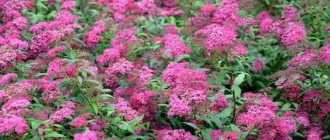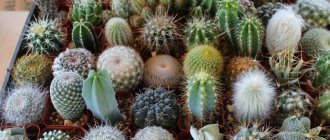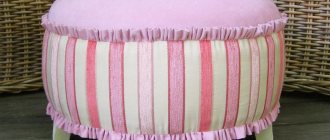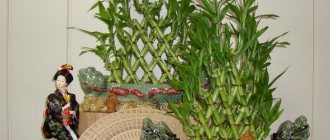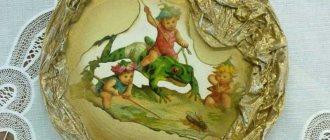- August 21, 2018
- Houseplants
- Ksenia Stepanishcheva
Almost everyone knows the fat woman. As you can see from the photo and name, the money flower is special. For some time it was customary to keep it at home for welfare. Another plant is called Crassula. The plant has special care features. The flowering of the money tree at home is original. You just need to create the right conditions for it.
Description
A photo of a money tree and a description of a houseplant allow you to find out its features. The Crassula genus includes 300-500 species of flowers. These include dwarfs, whose height is no more than a few cm, as well as tall trees growing up to 3-4 meters. Many species are perennials, but there are also annual species that die immediately after flowering.
What does a money tree look like? Most stems are erect or creeping herbaceous. There are shrubs with succulent fleshy or woody trunks, tall tree-like ones. The leaves of the plants are juicy and fleshy, covered with a waxy coating. They have a yellowish, greenish or blue tint, but in the sun they can take on a red or cherry tone. The money tree is an indoor plant that is known for its unpretentiousness and easy care.
When and how does the money tree bloom?
It is difficult to name the exact time when the fat plant will form and open its buds. Some lovers claim that they appear in the autumn-winter period, while for others the crop blooms by the end of summer. The first usually occurs indoors, the second - outdoors, but not necessarily.
From a distance, a flowering money tree planted in the ground for the summer can be mistaken for a collapsed Vidny sedum bush. But upon closer examination, it turns out that the Crassula has looser inflorescences, and the color of the buds is much paler.
Crassula flowers are small, star-shaped, usually with five pointed petals. In Ovate and Tree-shaped, they are white with a slight pink or purple tint, collected in umbrellas, located at the ends of the shoots, where not a growth bud, but a flower bud is formed.
Other species can form yellowish, bluish, red buds, rarely solitary, more often grouped into racemes, panicles, umbrellas emerging from the axils of the leaves or the tip of the branch.
When the crassula begins to bloom, a sweet, not very pleasant aroma spreads. A pot of a budded money tree should not be kept in the bedroom.
Benefit
The flower is believed to bring financial success. That's why it is called the money tree. It is also called the tree of luck, the monkey tree. Many people know that the fat woman has positive energy. But not everyone knows that it has healing properties; it is a filter plant. The phytoncides it produces have a pronounced antiviral, antibacterial, and antifungal effect; the flower disinfects the air.
Crassula juice treats:
- herpes, insect bites, cuts, abscesses, bruises;
- sore throat, gum inflammation;
- arthritis, other joint diseases.
The plant should not be taken orally as a medicine - it contains a lot of arsenic. The flowering of the money tree looks beautiful. At home, caring for the plant is simple and ensures normal growth and development of the flower.
Give the money tree the desired shape
It is necessary to form a crown in the form of a tree at the very beginning of its growth. To do this, cut off the side shoots until the tree reaches the required height.
Next, pinch off the top shoot so that the tree begins to send out lateral branches, which will become the crown of your tree in the future. The plant is periodically turned towards the light to avoid bending of the trunk.
With proper care of the money tree, it will become a wonderful decoration and talisman of any room and will be able to delight you for a long time with its beauty, and sometimes with its flowering.
Kinds
What does a money tree look like? The photo shows that the flower has an incomparable appearance. The most common plants include the following:
- Crassula oval. This is a popular type of tree, which in nature can be 3 m high. And in an apartment the height is no more than 1.5 m. The plant is unpretentious in care and tolerates shade well.
- Crassula arborescens. The tree has bare branches and a trunk, fleshy, flat, ovoid leaves. It has white or pinkish flowers, collected in panicle inflorescences. But the money tree rarely blooms at home. Caring for it is the same as for the others, but the tree cannot tolerate shade.
- Crassula silvery. Compared to the previous 2 types, the money tree of this type is smaller. In other respects, the plant is similar to the oval and tree-like Crassula.
Of the creeping plants, the most popular are the following types of Crassula:
- lycophytes;
- pseudolycophytes;
- milky;
- point;
- tetrahedral;
- Cooper.
The genus Crassula has many species. Some of them are designed for an aquarium. But the most common species is the tree crassula.
In order for the money tree to bloom at home, care must be of high quality. It consists of moderate watering, periodic feeding, removing dust from the leaves, pruning and shaping the crown. Each of these procedures has its own characteristics.
Popular domestic species
Since childhood, a familiar flower has been decorating apartment windowsills for many decades. But not every amateur gardener knows that Crassula can have a very unusual appearance. It would seem that the simplest plant, Crassula, can surprise even experienced gardeners. These can be either ordinary trees or hanging species or plants that resemble moss.
Crassula leaves are smooth or covered with fine fluff, color from light green to dark green, red or orange. Some species have variegated coloring and edging. Sometimes plant leaves are covered with dotted spots or stripes.
Crassula Atropurpurea (C. Atropurpurea)
C. Atropurpurea var.
watermeyeri The leaves are back teardrop-shaped, the width of the plate is about 3 cm, the length is 5 cm. The surface of the leaf is rough. In winter and in the shade, the leaf color is green; with constant exposure to ultraviolet light, the color can change from pink to yellow-orange. It usually blooms in winter. The plant produces an erect peduncle on which small white inflorescences are formed.
Crassula Arborescens tree (C. Arborescens)
Crassula arborescens subsp.
arborescens This tall growing species can reach 1.5-3 meters in height. The crown is branched, the trunk is brown-green, dense, up to 20 cm in diameter. The leaves are fleshy, smooth with a waxy coating, and colored light gray. The surface of the leaf is strewn with small red dots, the edge is burgundy-red. Size from 2 to 5 cm in length, round shape, short petioles.
Brown's Crassula (C. browniana)
C. Browniana © Apostolou Stavros
A small tree with a dense stem. It grows quickly, the height of an adult plant is 20–30 cm. The leaves are about 0.5 cm in length. Branches, leaves and trunk are pubescent. Blooms throughout the summer.
Also read: Gasteria - popular domestic species and care for them
Crassula Ben (C. Capitella Ben)
C. Capitella Ben © Green Page
Beautiful decorative succulent, height up to 30 cm. Stems are erect, propeller-like leaves are wide, pointed. Aerial roots form in the internodes of each stem. If the stem is tilted towards the ground, it quickly takes root.
The sheet plates are stacked opposite each other. The leaf color is bright green with a red edge. The closer to the top, the smaller the size of the leaves. At the very top of the head, the leaves transform into bracts. The inflorescences are pointed, the flowers are star-shaped.
Crassula Brevifolia (C. Brevifolia)
C. Brevifolia © Wayne Fagerlund
An upright species of Crassula, the height of an adult plant is from 30 to 50 cm. The stems are strong, tree-like, brown. The leaves are spherical, fleshy, juicy, about 1 cm long, 0.5 cm in diameter, and grow in pairs. The leaf color is green with a reddish edge. With age, the color changes to yellow-red or purple. Flowering period is winter. The inflorescences are small and white.
Crassula Temple of Buddha (Buddha) (C. Buddha's Temple)
C. Buddha's Temple
An exotic slow-growing species with an annual growth of 5 cm. When the plant reaches 15–20 cm, it lies on the ground under its own weight and grows horizontally. The leaves are shiny and bright green in color. The root system is superficial. The flowers are pale red or pink.
Crassula Barklyi (C. Barklyi)
Crassula Barklyi
The popular name "bandaged finger" accurately describes the appearance of the plant. A miniature columnar species, only 5–10 cm high. The leaf blades fit tightly to the stem and overlap each other as they grow. The leaves are densely dotted with cilia, which absorb moisture and nourish the plant. Flowers are formed at the top, white in color, small in size. The inflorescences have a bright aroma. After the flowering period, the plant does not die.
Crassula Garnet Lotus (C. Garnet Lotus)
C. Garnet Lotus © Giromagi
The leaves are thick, fleshy, covered with a waxy coating that resembles frost. The foliage color is garnet-purple. The leaf blades form an erect rosette up to 15 cm in height and 15–20 cm in width. The leaves are wide, gradually narrowing towards the growing point. The flowering is bright and rich. The flowers are bright red and grow in clusters.
Crassula Gollum (C. Ovate Gollum)
C. Ovate Gollum © Apostolou Stavros
Slow-growing exotic succulent, popularly called “Shrek ears”. The leaf shape resembles a small funnel, which has a cup-shaped extension at the top. The crown is formed randomly, which is why adult plants have a different appearance. Height up to 0.5 meters.
Crassula Curly (C. Arborescens Curviflora)
Crassula arborescens curviflora
This species has distinctive wavy leaves. It is thanks to their shape that the plant got its name. This is a powerful, large plant with a voluminous crown. The leaves are silvery on top and the inside is reddish. There are dark dots on the outside of the leaf blade. The shape is a wide oval, length 5–7 cm, width 4–5 cm. There are two varieties that differ in the shape of the leaf plate and color.
Crassula Corymbulosa (capitella) (C. Capitella Corymbulosa)
Crassula Capitella Corymbulosa © CactusGarden
A plant with an erect crown, which grows over time and begins to spread along the surface of the soil. The stems, trunk and leaves are fleshy, strong, bright green in color. The inflorescences are small, the flowers are white.
Crassula Coral (C. Ovata Coral)
Crassula Ovata Coral © Little Prince Nursery
Common name for “skinny fingers”. The unusual leaves have an elongated shape that tapers towards the apex. It is noteworthy that one plant can have pointed leaves and leaves with a funnel-shaped expansion. Therefore, beginners often confuse Coral with Gollum. The flower grows quickly, the crown is lush, but is formed heterogeneously.
Crassula Marnier (C. marnieriana)
C. x rupestris f.
marnieriana “Hottentot” © gardenersworld.com Decorative species with a height of only 15–20 cm. The leaves are round and growing. tightly adjacent to the stem, and to each other. The leaf blades are covered with a protective warbler, which protects the plant from excessive evaporation of moisture. In young flowers, the shoots are located vertically, and with age they descend to the ground and spread along the ground. The leaf color is green with coral edging. Blooms in spring and winter. The inflorescences are umbellate, the flowers are white or pinkish. The shape of the flowers is star-shaped.
Also read: Cotyledon - introduction to the types and care of the plant
Crassula Morgan Beauty (C. Morgan's Beauty)
Crassula Morgan's Beauty © la-kosta.ru
An interesting succulent with beautiful and lush flowering. In winter and spring, inflorescences appear on the plant in the form of clusters. The color is rich, dark pink. The trunk is dense and thick. The leaves are located tightly to each other, colored silver-green.
Crassula Minor (C. Ovate Minor)
C. Ovate Minor © Green Acres Nursery & Supply
Miniature decorative succulent great for creating arrangements. The leaves are very small, from 1 to 1.5 cm long and only 1 cm wide. The plate is painted green along the edge of the sheet with a red edging. The plant reacts to lighting and can change the color of its leaves. The young plant has a soft green stem. With age, the trunk becomes woody and bare.
Crassula Nealiana (C. Nealiana)
Crassula Nealiana © Succulent.Market
A beautiful plant with horizontal shoots. The length of the branches is up to 15–20 cm. The leaves are dense and silvery in color. The inflorescences are small, formed on the tips of the shoots. In the sun, the color of the foliage changes and takes on a red tint.
Crassula ovata (C. ovata)
Crassula Ovata, Jade Plant (Big Leaf) © nestreeo
The most common species that grows on many windowsills of amateur and professional gardeners. This is a fairly large plant that can reach 1–2 meters. The crown is wide and branched. The leaves are round or oval, fleshy, dark green. Blooms in spring and winter, the inflorescences are white or pale pink.
Crassula Perforate (C. perforate)
Crassula Perforate © gardenia.net
A distinctive feature of this plant is the triangular leaves, which seem to be strung on the stem. The second name of the flower is “perforated”. This is a very tall perennial; an adult succulent can reach 3–4 meters. The shoots die off after flowering and fruiting. Only the basal part remains, on which the regenerating buds are located.
The flowers are small, yellowish or white. Plants with blue and red inflorescences are rarely found.
Crassula Pyramidalis (C. Pyramidalis)
Crassula pyramidalis variegata
A rather unusual and rare species of Crassula. A small plant with erect shoots. The crown is branching and grows rather slowly. On the main stem, several shoots can develop simultaneously and grow unevenly. An adult plant resembles cartoon cacti. Shoots are from 5 to 10 cm in length, 1 to 1.5 cm thick. The leaves are green, triangular in shape, thin and tender. The internodes are short so the leaves fit tightly to the stem.
Crassula moss and false moss (C. Muscosa)
Crassula Muscosa Lycopodioides
Herbaceous succulent with a shallow root system. The height of an adult plant is up to 20 cm. The roots are thin and delicate and therefore cannot go deep. Sometimes aerial roots form on the lower branches. The plant does not have a trunk, but in the center there is a main shoot, on the sides of which young shoots are formed. It blooms in winter, the inflorescences are yellow and green. The flowers have a delicate pleasant aroma. Sometimes another name is found: “mossy crassula”.
False-moss is a separate subspecies of Crassula, which differs only in the density of the leaves on the branch and color. Foliage colors are green, silver and white. Some plants combine several shades at once. The shoots do not grow straight upward, but can grow to the sides.
Crassula Rupestris (rock) (C. Rupestris)
Crassula rupestris “Tom Thumb”
Young plants have herbaceous shoots that become woody as they grow. The branches spread along the ground strictly horizontally. Sometimes only the tips of the shoots point upward. The height of an adult flower is up to 50 cm. The leaf shape, depending on the variety, can be ovoid or triangular. The leaves grow in pairs and have pointed edges. There are no petioles, so it seems that the leaves are strung on a stem. The leaf blades are light green with a dotted red edge.
Also read: Aichrizon - a small tree of great love and happiness
Crassula Springtime (C. Springtime)
Crassula Springtime © Succulents Box
A small compact plant with bright green, dense leaves. Young shoots are fleshy, about 3–4 cm in diameter, directed upward. The branches of adult succulents sag and touch the ground. With prolonged contact with the ground, roots develop on the shoots and the branches take root. Flowering is abundant, the inflorescences are light lilac.
Crassula Sunset (C. Ovata Hummel's Sunset)
C. Ovata Hummel's Sunset © Joyce-Tex-Buckner
This species has a very interesting red and yellow leaf color. But this color only appears in bright sunlight. The first flowering occurs at the age of seven, sometimes later. Crassula blooms in late autumn. The inflorescences are a beautiful pale lilac color. The shape of the flowers is star-shaped.
Crassula Tricolor (C. Ovata Tricolor)
Crassula Ovata Tricolor
A distinctive feature of the plant is its green leaves with white or cream stripes, which turn bright pink in the sun. The leaves are fleshy, dense, velvety. The shape of the leaves resembles an elongated drop. Due to the arrangement of the leaves, small rosettes are formed. An unpretentious plant suitable even for beginners.
Crassula Undulatifolia (C. Undulatifolia)
Crassula Undulatifolia © Mountain Crest Gardens
This species is distinguished from other plants by its dense, narrow leaves. The shape of the leaves is concave and therefore slightly wavy. The color of the leaves is silver-blue. The tips of the leaf blade are red. Sometimes a rather rare variegated color is found. The trunk is round and dense. With age it thickens and becomes woody.
Crassula the Hobbit (C. Ovata Hobbit)
Crassula Ovata Hobbit © Ezy Care Succulents
The height of an adult plant is approximately 50–60 cm. The leaves of the plant grow together from the base to the middle. The tops of the leaflets are widely spaced and have the appearance of a so-called “pumpkin”. The leaves seem to be turned outward. When grown correctly, the crown is quite compact and dense.
The stem becomes woody with age, so the plant is often used to create bonsai. The growth rate is average. The crown does not require trimming and is formed in the most bizarre ways. The outer side of the leaves is green, and the inner side has a rich burgundy-red color.
The plant does not tolerate direct rays well, so shaded window sills in a western and northern direction are best suited.
Crassula tetrahedral (C. Tetragona)
Crassula Tetragona “Pine”
The leaves are oblong and pointed, arranged crosswise. The shape of the leaves resembles needles or thorns. The color of shoots and leaves ranges from light to dark green. The plant grows upright, the height of adult bushes is up to 1 meter. With age, the plant grows and becomes like a small tree. And the appearance of the plant makes it look like perennial conifers. The shoots and leaves are juicy, hard, and voluminous. Leaves are 2 to 3 cm long. It blooms in summer, the flowers are white and are located at the top of the shoots.
Crassula Estagnol (C. Estagnol)
Crassula Estagnol
An unusual type of Crassula with a twisting trunk. The foliage, trunk and shoots are bright green. The leaves grow on top of each other, forming a rosette. Oval shape with tapered edges. It does not tolerate lack of light well, so it is best to place the plant in sunny windows. With a lack of lighting, the leaves turn pale, and the shoots stretch and weaken.
It is often joked about Crassulas that they are created for lazy people. And it’s really difficult to find plants that are just as easy to care for and don’t require specific knowledge about growing and propagating. Bright and unusual plants can complement any interior and fill the house with beauty and comfort. Among other things, fatty mushrooms have bactericidal properties. There are also many beliefs and signs about wealth and prosperity associated with plants.
Lighting
The money tree is an indoor plant that should be placed in areas with sufficient lighting. It is best to choose the southeast side. This is a recommendation not only from flower growers, but also from Feng Shui specialists.
It is necessary to control that direct sunlight does not fall on the plant, as this causes the flower to turn red, wither, and the foliage to fall. In the summer, it is advisable to take the tree out onto the balcony, and in the cold, move it to windows facing south.
Photos and titles
Warty is a rosette plant with compact swollen bluish leaves. Its flowers are white or yellow-green, very small; during flowering, the rosettes stretch out and may lose their decorative effect, so it is better to break them off. Forms turf.
Group or collected is a medium-sized herbaceous plant with reddish-green triangular leaves growing together in pairs. Its small columnar shoots in cross section resemble a diamond. The flowering of this species is not particularly decorative; its main attraction is its “sociality”: group crassula grows in dense clumps.
The tree or “money tree” is a very popular indoor plant, the unusual shape of the stem, reminiscent of a trunk in both shape and color, traces of fallen leaves on the greenish-brown stem make it even more unique, thick shoots-trunks dotted with shiny, thick leaves extend from the stem ovoid or round in shape. The leaf has a dark green color, its underside may have a reddish tint, the color of the leaf may have a bluish-green tint, but the underside remains reddish. It blooms with white, small flowers, but in our latitudes this does not happen often.
This plant was called the “money” tree because of its leaves, which are similar in shape and shine to coins.
Cooper's is a miniature ground cover plant, its height is no more than 15 centimeters. The leaves have a sharp tip with a large fiber in the center, the edge of the leaf has sparse fibers. The color of the leaves is unusual, they are brownish-green with brown spots, they are located on the stem in a spiral. The top of each stem is crowned with an inflorescence of small, white or pink flowers. Flowering is long lasting. Photo of Cooper's Crassula:
Marnier is a herbaceous plant with leaves resembling angular green beads strung on a thread-stem. At first they are erect, then they lie down.
Mesembryanthemum , as the name suggests, resembles a living stone from the Mesembryanthemaceae family.
The pimply brownish leaves are disguised as sandstone and grow in a manner uncharacteristic for rosettes. This plant blooms with tassels of light, inconspicuous flowers.
Milk is a fairly large subshrub up to 60 centimeters tall. Quite large leaves are decorated along the edges with white dots, which is why the plant got its name. Blooms with thick white panicles.
Nila is distinguished by its medium-sized shoots, reminiscent of spruce cones - tightly seated leaves look like scales.
Oval (purslane) in appearance resembles a miniature tree; its rounded stem is brown in color with a slight green, and the shoots and branches are of the same color. The leaves are thick, oval-shaped, dense green with silvery streaks. The flowers are small, white, star-shaped, collected in medium-sized inflorescences. Due to the shape of the leaf and trunk, it is classified as a “money tree”.
The bordered leaf has a red color on adult leaves; young leaves are green at first, but acquire a characteristic color with age.
Under direct sunlight, this light-loving plant becomes brighter, but with a lack of light it turns pale and stretches out.
Round, or rosette, it looks like an aeonium - its leaves are collected in flower-like rosettes. They are fleshy, light green, with pointed reddish tips, and reach 2.5 centimeters in length. The plant branches abundantly and quickly occupies a large area.
Offspring is a small herbaceous plant, with pointed leaves decorated with teeth along the edges. The edge of the leaf is often variegated: red or light green. It quickly spreads across the territory provided to it - creeping stems easily take root, giving life to new shoots.
Their length reaches up to a meter, and the size of the leaves is up to 3.5 centimeters.
Blooms with cream panicles.
Moss-moss - a plant with first erect, then drooping shoots. The densely folded leaves clinging to the stem make the stems of the lycophyte crassula resemble green ribbed worms, which are covered with tiny white stars during the flowering season.
Perforata (perforata) has tiny triangular-shaped leaves covered with a bluish waxy coating. Its stems are erect, thin, and flowers are formed on their crowns.
Skalnaya is a large plant, reaching up to 60 centimeters, that looks like juveniles. Small ovoid leaves turn red in the sun. Blooms with pink fragrant umbrellas.
Dotted is a highly decorative plant with painted fleshy rosettes of leaves. Photo of Crassula punctata:
The tetrahedral one has sharp subulate leaves about 4 centimeters long, rich green, thick and dense. This shrub is easy to form into a small, showy tree. Its stems are abundantly overgrown with brown aerial roots, designed to capture moisture from the air.
Woolly or pubescent - a tiny creeping subshrub, covered with thick fine hair from the root collar to the flowers - small white tassels. Its leaves are bluish, about 2 centimeters long and less than a centimeter wide, the plant’s height is about 15 centimeters.
Coral is unusual due to the shape of its leaves; they are sticks, tapering at the base and have a funnel-shaped depression at the top. Bizarre leaves “sit” on thick stems-twigs growing from the main “trunk”. The flowers are small and white.
Undulatifolia is a variety with bluish leaves, the edges of which are slightly wrinkled.
Minor, also known as Compacta , is a dwarf oval form with smaller and densely packed ovate leaves.
Schmidt is a groundcover fatty plant no more than 10 centimeters tall. At the base of the stem, thick, lanceolate leaves are much larger than those that grow closer to the top, on which there is a red panicle inflorescence. The leaves and stem are greenish pink. The plant is distinguished by its remarkable decorative properties and is widely used in landscape design.
Curly is a tree-like plant; it has a stem with a shape and color reminiscent of a miniature tree trunk, but it is distinguished from other crassulas of this type by a thin leaf blade, light green with slightly curved, as if curled, wavy edges with a reddish edge. It blooms rarely, the flowers are small, white or pink.
The vastness and heterogeneity of Crassula species allows you to choose a plant for any purpose, be it creating a bonsai, lining a border, or unusually decorating a window sill.
We also invite you to learn about other varieties of this interesting plant. Read about the Silver Crassula, Sunset, The Hobbit and Gollum. These types are perfect for beginning flower growers - they are unpretentious and original.
Temperature
In spring and summer, the suitable temperature is 20-25 degrees. It is better to place the flower on a balcony or street, as it is difficult for the tree if there is a lack of fresh air. In winter, the plant is comfortable at 15 degrees, but not less than 4.
At room temperature, the flower can overwinter, but its leaves begin to wither and fall off. It is advisable not to place wood near heating radiators.
Money tree, beauty bloom
Crassula during the flowering period is a pleasant surprise and a huge rarity. Every gardener would like to see how their pet is covered with small flowers, but for this you need to adhere to a number of important points.
Flowering money tree photo
Although the plant is considered hardy and undemanding, it is easy and quick to grow, I would like to point out that the flowering period of the tree occurs extremely rarely. Here you will need the iron patience of the owner of an indoor flower.
Transfer
Judging by the photo, the flowers of the money tree are very beautiful. In this case, the plant periodically requires replanting. It is performed every 2-3 years, and if necessary, for example, when there is a strong growth of the flower. The transplant should be done in the spring into a pot that is slightly larger than the old one. You can use regular purchased soil, which is used for planting cacti and succulents.
You can prepare this soil substrate yourself if you mix turf soil and sand, as well as leaf soil in a ratio of 1:1:3. If there is a handful of humus, clay, or ash in the ground, the nutritional properties of the soil will improve. In order for the tree to grow, do not forget about drainage - expanded clay or crushed shards are needed.
In a pot, which is filled with drainage material and ¼ of the earth, you need to place the roots of the tree with a lump of earth. Then the voids are filled with a new substrate. After transplanting, the flower must be watered well. The soil should be loosened periodically to improve oxygen supply to the roots, and if the soil sags, then the top layer should be added to the pot. When the root is very long, it is shortened.
Care during the flowering period
In order for the money tree to delight with delicate flowers for more than one week, the plant is provided with suitable conditions. This should be taken care of in advance so as not to rearrange or move the fat plant from place to place, and not to create stressful situations that will lead to the flowers falling off.
